- Administrator
- Albums and Singles
 With each project providing a side of the album (or half of a CD), the whole is a series of dark compositions that are as complex as they are intimidating. The best part, however, is how these nuanced pieces sound like no one else.
With each project providing a side of the album (or half of a CD), the whole is a series of dark compositions that are as complex as they are intimidating. The best part, however, is how these nuanced pieces sound like no one else.
Mamiffer’s "Uncrossing" differs from their contribution on the split LP with Oakeater, focusing more on subtle textures and sparse, plaintive piano.The quiet background slowly becomes deeper and more cavernous, reverberating everything around it before dropping to silence, disrupted by a deep, echoing gunshot-like drum beat.
Soon the track builds again, bringing in a massive organ drone and a huge wall of scraping and grinding sounds over the disquieting rhythm.While the track on the Oakeater split reminded me of Skullflower, here it feels more like a denser, metal tinged take on Organum.While there’s more layers of sound here than David Jackman would usually include, the careful use of tone definitely resembles his work, in the best possible way.
Aaron Turner's House of Low Culture contributes "Ice Mole," with help from Z'EV on percussion.Opening with quiet static-y sounds and distant, menacing hums, Turner’s guitar becomes a prominent feature immediately, but changes its character throughout.Initially it drones along with his vocals, which are layered and off in the distance.
The piece builds into heavier, denser sounds that are stripped away to leave only quiet piano interludes before bringing back the static and guitar, with some more obvious metal percussion to be heard.The guitar builds to an overdriven, grinding fuzz before closing the song on more traditional guitar playing, letting delicate notes chime out in the open.
One of the best things about his album is the fact that neither side can fit into any real sort of pigeon hole.There's some drone, some metal, some industrial, and some noise kicking around on here that come together perfectly.Genre labels don’t really apply, nor should they.This split has the right amount of dark tension, but avoids any possible cliché associated with it, and instead both artists excel at creating moody, yet diverse and complex works that are simply compelling.
samples:
- Mamiffer - "Uncrossing"
- House of Low Culture - "Ice Mole" (Excerpt 1)
- House of Low Culture - "Ice Mole" (Excerpt 2)
 
Read More
- Administrator
- Albums and Singles
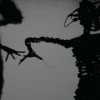
Since the Afghan Whigs called it quits a decade ago, frontman Greg Dulli has been quietly releasing a stream of solid, occasionally fantastic albums with his current band, the Twilight Singers. Dulli's latest release is his first with the Singers since recording the Gutter Twins' debut with former Screaming Trees vocalist and frequent collaborator Mark Lanegan.
The moment I saw the cover art for Dynamite Steps, which echoes the grayscale, shadowy palette of 2003's Blackberry Belle (secretly Dulli's best album), my interest was piqued. Dulli has been making consistent music for 20 years, first with the Afghan Whigs' brand of cathartic 1990s alt-rock shot through with soul, now with the Twilight Singers' downtempo, back-alley blues. An enjoyable album from Dulli was a safe bet—I hoped for something more.
As can be expected, Dynamite Steps is not a reinvention or departure. It is Dulli-by-numbers, a master of his craft writing for his audience and sticking a little too close to his comfort zone. The highlights come early: propulsive, piano-driven opener "Last Night in Town" is one of the album's catchiest songs. Mark Lanegan contributes a somber vocal to "Be Invited," adding an effective dose of gravitas: it plays like a great, lost B-side from the Gutter Twins' slept-on Saturnalia. "Waves" is the album's most raucous moment, Dulli's strained vocals atop a bed of dissonant guitars and frantic drumming recalling "I'm Her Slave"-era Whigs. Dulli puts on a powerful live show, and songs like these are his bread and butter on stage—all palpable tension and release, rock and roll melodrama packed with sing-along choruses.
My favorite song, "On the Corner," shares its title with Miles Davis' 1972 jazz-funk masterstroke, likely not by coincidence—Dulli has referenced Davis before on the Whigs' "Miles Iz Ded" (and its remix "Rebirth of the Cool"), written immediately after his passing. "On the Corner" recalls its namesake's groove and pairs it with a couplet that stands out, halfway into an album overflowing with Dulli's trademark seedy lyrics: "All rise with me / all take your place." In between references to Gomorrah, desire, licked lips, spread legs, and dirty kisses, Dulli seems to hint at a desire for spiritual redemption. This theme, touched on at various points, is eventually put to rest on the album's closing track, "Dynamite Steps," which finds Dulli drawn back to earthly desires: "Some speak of a light / control of the game / but I leave the past alone... Push your faith aside... Your medicine is faith / and your flesh divine."
Ultimately, Dulli's work lives or dies by the strength of his songwriting, which is why Dynamite Steps doesn't rank with his best efforts. Consistency is an issue by the album's second half: the songs are mid-tempo, languid and not terribly engaging. Dulli sounds passionate at times, but I find my attention lost because the songs are monochromatic in pace and construction. A potential highlight turned sour, Ani DiFranco's vocal on "Blackbird and the Fox" is pleasant but unmemorable, and it's not for her lack of trying—"Blackbird" falters because it aches for, quite frankly, a hook of any sort. With key exceptions (see the Afghan Whigs' unbelievable "Faded"), slow-burning ballads are not Dulli's strength, so it's disappointing to hear Dynamite Steps resort to them after playing its best cards early.
Despite its flaws, Dynamite Steps is worth a listen with the caveat that, while strong in parts, it is not Greg Dulli's most consistent record with the Twilight Singers. I look forward to hearing its better songs fleshed out on stage as the Singers tour this year, but I may not revisit the album too frequently in the meantime.
Samples:
Read More
- Administrator
- Albums and Singles
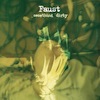 Over the past few albums, Jean Hervé-Peron and Zappi Diermaier’s version of Faust have been getting more and more into the rock side of their krautrock. On this latest release, they have fully embraced rock and roll to the point where rock has become pulverised and the roll is in free-fall. Hints of classic rock (as in 1950s rock, not ‘70s dad rock) are smashed into atoms and reconstituted as something new, something loud and Something Dirty.
Over the past few albums, Jean Hervé-Peron and Zappi Diermaier’s version of Faust have been getting more and more into the rock side of their krautrock. On this latest release, they have fully embraced rock and roll to the point where rock has become pulverised and the roll is in free-fall. Hints of classic rock (as in 1950s rock, not ‘70s dad rock) are smashed into atoms and reconstituted as something new, something loud and Something Dirty.
With a title like "Tell the Bitch to Go Home," I was expecting something with a bit of clout from the opening piece and I was not disappointed. Feedback, surging organs and tight, powerful drumming come together to make a wild, happy explosion; there is a tingle along the back of my neck like the first time I heard Faust (Faust IV being the culprit in question) and I have fallen in love all over again with them. Not that I have ever stopped loving them, mind you. This excitement does not fade after the initial hit, it builds across Something Dirty as the band fully invades my mind. Many of the songs feel like loose jams rather than finished pieces; this is not a negative criticism at all as the end result is a collection of music alive with vibrancy and danger.
Of course, it would not be a Faust album without a few surprises or about turns. "Lost the Signal" is a slinky, sexy piece of work that sounds nothing like Faust and everything like Faust. Here, Geraldine Swayne takes over the vocal duties and feminises Faust’s music beautifully. Initially, the album’s title could be taken to refer to the noisiness of the music but Swayne’s singing and the euphoric moment where she shouts for the band to "Start it up!" points to something more carnal. Faust have never been strangers to the sweatier, saltier side of life but Something Dirty definitely has more swagger to it than any of their other releases. James Johnston may have left the Bad Seeds but Nick Cave obviously has left his mark on his guitar playing.
While I have yet to encounter a Faust album I have not liked, Something Dirty strikes me as being that bit more special than the last few releases by either version of Faust. I do not know whether it is because this is more accessible than usual or because the group have really found their groove but I do know that this is one of the strongest albums in their catalogue, a blood relative of other "pop hits" like the aforementioned Faust IV or even So Far. Something Dirty is a fling I want to have again and again.
samples:
 
Read More
- Administrator
- Albums and Singles
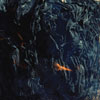 Ghostly International presents SMM: Context as a vaguely philosophical release centered around the qualities that film soundtracks, classical music, and ambient music share, but I think its lack of pretense is part of what makes it great. On one level, SMM: Context is just a collection of eleven songs from eleven electronic artists, including Leyland James Kirby, Jacaszek, Aidan Baker, and Kyle Bobby Dunn. On another level, it's a very coherent and fluid record filled with beautiful songs and sustained by a shared vision.
Ghostly International presents SMM: Context as a vaguely philosophical release centered around the qualities that film soundtracks, classical music, and ambient music share, but I think its lack of pretense is part of what makes it great. On one level, SMM: Context is just a collection of eleven songs from eleven electronic artists, including Leyland James Kirby, Jacaszek, Aidan Baker, and Kyle Bobby Dunn. On another level, it's a very coherent and fluid record filled with beautiful songs and sustained by a shared vision.
Superficially, much of the music on SMM: Context is alike. None of the songs raise their voice beyond a roar, and nearly all of the artists use long, unhurried phrases to build their pieces. Most of the artists, like Leyland Kirby, Christina Vantzou, Goldmund—Keith Kenniff of Helios—Rafael Anton Irissarri, and Jacaszek also use or sample acoustic instruments, especially strings and voices, to mock up a Stars of the Lid or Angelo Badalamenti vibe, which is a decent way to describe most of the record. Beyond those qualities, however, SMM: Context is filled with a panoply of sounds, none of which can be reduced to a single reference or influence.
Kirby's atmospheric contribution, "Polaroid," is a good example of this, in part because it epitomizes the electronic-acoustic—not electro-acoustic—synthesis that holds the record together thematically. His nylon string study is suffused with electronic steam and synthetic drones, but they are a far cry from the sounds he once produced as V/Vm, The Caretaker, and Leyland James Kirby. In fact, his typically dominant drones play a supporting role here, as Leyland puts the emphasis sharply on an acoustic guitar, with which he produces a simple and sharply played melody. Badalamenti's sonic disposition is present, mostly in the form of atmospheric keyboards, but Kirby's guitar recalls the music of Andrés Segovia just as strongly. It is romantic stuff, and it typifies a strategy each artist on SMM: Context shares, with just a few exceptions.
Christina Vantzou, from The Dead Texan, and Rafael Anton Irisarri also employ direct, gently played melodies over a bed of synthetic tones, but neither of them emphasize atmosphere in the same way. Nevertheless, they both use muted colors and simmering textures to produce romantic and cinematic sounds, just like Kirby. Jacaszek makes the best use of this approach, though; his "Elegia" is the most resplendent and decorated song on SMM: Context, and maybe the most beautiful thanks to the way he contrasts his melodies and noises. If Kirby, Vantzou, and Irisarri represent the cinematic tendencies of SMM artists, then Jacaszek represents the classical and symphonic ones.
Kyle Bobby Dunn is his austere counterpart. "Runge's Last Stand" features nothing in the way of conventional melodies or rhythms, and it is less reliant on diverse colors and acoustic instruments than the other songs on the album are. Using but a few diaphanous tones and textures, he manages to evoke the same kind of introverted and fleeting beauty that Jacaszek achieves. Both Aidan Baker and Manual follow the same path, but neither of them can contend with Kyle's liminal spaces and rarefied phrases. He chases Morton Feldman's sound and gets part of the way there; next to that Baker and Manual can't help but sound a little heavy-handed.
Even though SMM: Context proceeds in a seamless way, SMM as a genre doesn't make much sense to me. If Ghostly International wants to facilitate the breaking down of musical boundaries, it can do so without putting yet another folder in the genre filing cabinet; SMM is an acronym they made up in the first place, and it doesn't even stand for anything. Why force all of these artists into a fabricated musical bubble when I can't even put my finger on one quality that they all uniformly share?
Ghostly International might have just gotten lucky with SMM: Context; it has eleven very good songs made by eleven very talented people, and all of them share enough of the same spirit to fit comfortably on the same record. In this case, so much of the music is just so beautiful and direct that I don't care if it's called classical, symphonic, minimal, or something even more abstract and unhelpful, like SMM.
samples:
- Leyland Kirby, "Polaroid"
- The Fun Years, "Cornelia Amygdaloid"
- Kyle Bobby Dunn, "Runge's Last Stand"
 
Read More
- Administrator
- Albums and Singles
 For their third LP for Sublime Frequencies, the group has put together a stunning collection of trance-inducing works. Yet, there are two things that set Beatte Harab apart from Group Doueh’s previous albums. The recording quality is a step above the others: granted the overall quality is not high fidelity but gone is the murk so all the instruments and singers can be heard distinctly. Secondly, Doueh himself has moved more into the background. His deft touch of the fretboard is undiminished but he confines himself to the back of the mix, his playing developing the overall shape of the music without dominating the other performers.
For their third LP for Sublime Frequencies, the group has put together a stunning collection of trance-inducing works. Yet, there are two things that set Beatte Harab apart from Group Doueh’s previous albums. The recording quality is a step above the others: granted the overall quality is not high fidelity but gone is the murk so all the instruments and singers can be heard distinctly. Secondly, Doueh himself has moved more into the background. His deft touch of the fretboard is undiminished but he confines himself to the back of the mix, his playing developing the overall shape of the music without dominating the other performers.
The album is mainly given over to the vocals which sound superb compared to some of the distorted recordings on the earlier LPs. Halima Jakani’s voice still manages to send my speakers into contortions; her singing sounding more impassioned on the title track (a version of which also appeared on the group’s previous album). Throughout Beatte Harab Jakani stands out compared to the other elements of the music; her voice silhouetted by the rest of Group Doueh.
That is not to say that the other musicians are relegated to a mere backing band. On "Kar Lakhaal," Doueh leads them through a fantastic instrumental piece that starts off contemplative and controlled but soon sprouts wings to fly into directions unknown. Leaving down his electric guitar for the tinidet (a banjo-like instrument), the music on Beatte Harab has a very different character to what I have heard previously from Doueh and his players. When not using electric guitar and easing up on the synthesisers that punctuated their other releases, it highlights how little Group Doueh deviates from traditional forms. While this is still a terrific album, for the most part I would be unable to guess it was Group Doueh without the album sleeve in front of me.
However, the classic Doueh sound turns up from time to time; Doueh’s fretwork on "Lehi Teyilu" being a particularly stunning example of his skill. Listening to such exquisite musicianship throughout Beatte Harab, I repeatedly imagine how this music must sound live. It is not a huge stretch considering all of the Group Doueh recordings seem to be one take. I know they are about to embark on a tour of the UK but opening up the gatefold sleeve and seeing a gorgeous photo (perhaps a video still?) of the audience during a Group Doueh performance in what I must assume is the Western Sahara, I cannot help but wish to be dropped smack bang in the middle of it all. It is a bit like listening to old bootlegs of The Velvet Underground or Throbbing Gristle, strange as it may seem. This is music very much born out of a landscape and a culture that cannot be fully appreciated when transplanted out of its environment. Yet equally I wonder if the mystery also adds to the experience, whether the evocative photos that line the sleeves create a world in my mind that is not really out there.
In any case, being able to hear this music at all is something to be thankful for as Group Doueh continues to inspire awe and delight. Hopefully, Sublime Frequencies do not tarry when it comes to putting out the CD of this (for the time being) vinyl only release. As lovely as the LPs are, Group Doueh deserve a bigger audience than the limited edition vinyl crowd.
 
Read More
- Administrator
- Albums and Singles
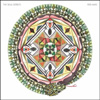 The latest opus from these prolific and chameleonic Swedes finds them in full-on primal rock mode, unearthing another batch of jagged, bludgeoning, and repetition-obsessed songs and reminding me that rock music can still be a bit dangerous and scary. There's a big twist this time around, however, as the Defekts have added a very noteworthy fifth member: the rather singular Daniel Higgs, formerly of Dischord art-punk stalwarts Lungfish. The addition proves to be an inspired move, as Higgs' intense, somewhat unsettling persona serves to highlight the darker, weirder side of the band.
The latest opus from these prolific and chameleonic Swedes finds them in full-on primal rock mode, unearthing another batch of jagged, bludgeoning, and repetition-obsessed songs and reminding me that rock music can still be a bit dangerous and scary. There's a big twist this time around, however, as the Defekts have added a very noteworthy fifth member: the rather singular Daniel Higgs, formerly of Dischord art-punk stalwarts Lungfish. The addition proves to be an inspired move, as Higgs' intense, somewhat unsettling persona serves to highlight the darker, weirder side of the band.
The Skull Defekts are a pretty unusual band for a whole host of reasons, but the aspect that I find most striking about them is how raw and primitive they can sound. It's an impressive feat, given that the four original members have been central figures in Sweden's experimental music community for years and that they have clearly absorbed a lot of very cerebral and exotic influences. Sometimes those highbrow influences manifest themselves fairly bluntly, such as on 2008's The Drone Drug, but the Defekts are smart and assured enough to ignore everything they've learned (or at least expertly conceal it) when it suits them.  On Peer Amid, the heavy emphasis on repetition could be distantly rooted in a fascination with raga, minimalist classical, or Neu!, but those touches are often totally subsumed by the band's unwavering focus on pounding, gut-level power.  Sure, they may regularly and fruitfully collaborate with folks like Pan Sonic, but it sounds like their true kindred spirits are more likely The Stooges or The Birthday Party. Having a frontman as imposing and shamanic as Higgs can only heighten that resemblance.
Given that these songs were mostly written very quickly from improvisations based upon one or two riffs each, their success or failure is largely based around how much I like the main riff. The strongest and most instantly gratifying of the batch is probably "No More Always," which boasts a very gritty and libidinal garage rock groove and some wonderful sneering vocals from Higgs. The propulsively throbbing title piece is also pretty electrifying, largely due to the stellar drumming of Henrik Rylander. In fact, Rylander proves to be the band's greatest asset over the course of the album, enlivening their weaker moments through sheer muscle and exuberance and maintaining a solid foundation for the oft-chaotic guitars and electronics.
I was also extremely impressed with the degree of guitar abuse throughout Peer Amid, as Joachim Nordwall and Daniel Fagerstroem sound like they're almost always on the verge of snapping strings or going out of tune. For his part, Higgs does not disappoint either, delivering his vocals with a sometimes frightening conviction. However, on the occasions when there isn't a solid beat holding all the component parts together, The Skull Defekts can seem pretty self-indulgent and inaccessible, as they do on the meandering "Gospel of the Skull."
The presence of Higgs is certain to polarize opinions on this album, as he is a vocalist that is impossible to ignore. I'm a bit conflicted myself, as I find pre-Higgs Defekts albums a bit more listenable, but Peer Amid hits higher highs. Regardless, he definitely adds a lot of character, presence, and tension to The Skull Defekts sound. Also, heavy rock provides a great foil for Daniel's outsized personality, so the pairing is a pretty mutually advantageous one all around. Unfortunately, there are some accompanying downsides too, as he draws the attention away from the rest of the band and I find his wild-eyed intensity pretty hard to take in large doses (a prime example is the endless whooping and yelping in "What Knives, What Birds"). Also, some of his lyrics and spoken-word interludes are way too stream-of-consciousness or bafflingly obtuse for my taste– I have absolutely no idea what he was trying to do with "Join the True," but I am certain that he was resoundingly unsuccessful at whatever it was. Picking stuff like that apart, however, is missing the point a bit: the content is secondary to Higgs' sheer force of personality.
Despite its occasional flaws and missteps, Peer Amid's best moments offer some of the most visceral and exciting rock music available.
Samples:
 
 
 
Read More
 The latest opus from these prolific and chameleonic Swedes finds them in full-on primal rock mode, unearthing another batch of jagged, bludgeoning, and repetition-obsessed songs and reminding me that rock music can still be a bit dangerous and scary. There's a big twist this time around, however, as the Defekts have added a very noteworthy fifth member: the rather singular Daniel Higgs, formerly of Dischord art-punk stalwarts Lungfish. The addition proves to be an inspired move, as Higgs' intense, somewhat unsettling persona serves to highlight the darker, weirder side of the band.
The latest opus from these prolific and chameleonic Swedes finds them in full-on primal rock mode, unearthing another batch of jagged, bludgeoning, and repetition-obsessed songs and reminding me that rock music can still be a bit dangerous and scary. There's a big twist this time around, however, as the Defekts have added a very noteworthy fifth member: the rather singular Daniel Higgs, formerly of Dischord art-punk stalwarts Lungfish. The addition proves to be an inspired move, as Higgs' intense, somewhat unsettling persona serves to highlight the darker, weirder side of the band.
- Administrator
- Albums and Singles
 A sensitive and spacious work, To R.S. utilizes a variety of traditional instruments (guitars, pianos, natural sounds, etc) in a completely different context, dissolving the known sounds into sparse, pure tones and subtle variations. As a work dedicated to composer Robert Schumann, it’s quite an accomplished slice of minimalism in its own right.
A sensitive and spacious work, To R.S. utilizes a variety of traditional instruments (guitars, pianos, natural sounds, etc) in a completely different context, dissolving the known sounds into sparse, pure tones and subtle variations. As a work dedicated to composer Robert Schumann, it’s quite an accomplished slice of minimalism in its own right.
Functioning as one piece divided into four logical sections, the movements flow nicely into one another, but each are distinct and stand on their own.The opening "Theme and Variations" reminded me, at least in passing, of Eleh's clinical attention to detail when it comes to employing tones and their variations.However, Wanke's tones, while carefully controlled, almost seem to bring along with them a perceptible group of imperfections:recording errors, natural interruptions, or intentionally placed there.Personally, I found them to be fascinating, and a good accompaniment to the otherwise icy, static tones.
"Turtle" turns those tones up louder and heavier, pushing into the lower frequencies but also bringing along quiet waves of sound that crash over, demanding more attention but not overshadowing the subtle undercurrent of sounds and textures.Even when the heavier sounds start to bleed into the red, they never overshadow the subtlety of sound.
These are mostly stripped away on "Joke," in lieu of heavy reverberated strings that cut harshly through, allowing silence in.Distant environmental sounds and improvised percussive elements creep in, slowly filling up the latter half and rendering it into a study in textures, as opposed to tones.The appropriately titled "Finale" even introduces conventional piano passages, extracted from Schumann's own work.The piano is overtaken by textural crackling that eventually becomes the focus, and when joined with deep, heavy melodies, takes on a post-industrial vibe.
The melody eventually becomes the focus and becomes warmer, even with an overt digital loop that goes along with it.Throughout there is a significant amount of variance in the sound before coming to a close on the same sparse, basic tones that opened the disc, allowing everything to come full circle.
Given the distinctive sound and conceptual structure of the pieces, it's hard to believe this is only Wanke's second full length release.Carefully balancing complexity and simplicity, his juggling of treated and pure sounds into true, traditional minimalism is exceptionally well done.
samples:
 
Read More
- Administrator
- Albums and Singles
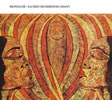
When I reviewed Bionulor’s debut release a bit less than two years ago, I complimented his conceptual use of "sound recycling," but felt the compositions lacked focus and structure. On this sophomore release, Sebastian Banaszczyk has definitely stepped up his game, and the results are quite satisfying
Thematically linked by using the human voice as a sound source, each of the five pieces here pull that element from widely varying contexts and then use it completely differently.For example, "Nhn-B." decimates a traditional Japanese song into what at first has a sparse, spacey vibe to it, but soon degenerates into a tortured chorus screaming through reverb hell, shattering the open calm.
"NL.," built upon Neal Armstrong’s famous recording from walking on the moon, initially allows its pedigree to come forth, with clipped voices and radio static overtly opening the piece from near silence.After these initially violent outbursts, the voices disappear, leaving only their minute traces to be heard, which Banaszczyk shapes into dramatic, almost prog rock swells that expand for infinity, much like the vastness Armstrong was witnessing as he made his statement.
Based upon an interview with Marcel Duchamp, "Dchmp." allows its source material to be heard at first, but is deconstructed into a high pitched squeal and little squirty outbursts of noise that come and go with reckless abandon.While the outro develops into more conventional "noise" territory, it is the most idiosyncratic piece, and also the most memorable, with its odd organic blasts of noise sounding like no one else.
"Nic Nie Jest Prawdziwe" features Banaszczyk himself, reading the infamous "Nothing is true" quote from Hassan-i Sabbah.Taking a more conventional approach of allowing his looped voice to be slowly disintegrated by effects, it first is mired in the expected echoes, reverbs, and delays, but is then disemboweled into fragments of phonemes, cut into stuttering beats or pulled apart into pure static, leaving nothing of its original nature to be heard.
The only misstep is the long opening "Scrd. Mshrm. Chnt.," because, throughout its nearly 22 minute duration, there is simply too much of a collage feel to it, and the piece never feels like it truly gets its footing.It is a compelling collection of percussive clicks, varying textures and alternating loud and quiet dynamics, but it lacks the clear compositional structure of the other pieces.
Bionulor has demonstrated some significant growth in both his style and compositions since his first album, and he is doing well carving out his own niche in a relatively crowded genre.
samples:
 
Read More
- Administrator
- Albums and Singles

A limited cassette release of an even more limited CD-R, Chicago's Sun Splitter, in the span of around 30 minutes, condense all of what I consider to be the best moments of the past 40 years of metal. With elements of drone, doom, industrial, and even classic rock, it all comes together as a perfectly conceived release.
Admittedly, I've never been a huge metal person.I find bands and albums that I enjoy, but it's not a scene I ever really immersed myself in, largely because whenever I did, I got burnt out rather quickly.It's also one where I find elements I love (big, heavy riffs, melodic solos) with ones I'm not so fond of (growled vocals, "shredding").It's almost like this trio knew what I liked and tailored the album for my tastes.
For example, "Cairn of Old Eyes" opens with taut, rhythmic riffs over a stiff machine beat, but with changing sounds and structures, it has the complexity of prog rock without the unnecessary pretense.Along with this there’s more than a healthy dose of drawn out guitar tones and whispered, mantra like vocals.Closer "Carrion Eater" is cut from the same cloth, opening with similar vocals and a warm guitar tone, but focuses more on the melody, even with the big riffs.
"Northern Blood Tithe" has some of the dual rhythm guitar/drum machine combo sound that has garnered many comparisons to early Godflesh, but there’s just as much Sabbath to be heard.The melodic elements reminded me of mid-period Thin Lizzy, but that’s pretty much my only go-to touchstone for the '70s rock genre.As a whole it's slower, more spacious, with vocals so buried and processed they sound like an additional instrument more than anything else.
It follows the same template as "Earth Burner," in that both are more doomy and repetitious, but in a carefully measured way.The repetition in both serve to build tension, with "Earth Burner" slowly adding changes in to keep the track dynamic, but without interrupting the deliberate drone structure.
With a style that is reminiscent of many, but sounds like none, Sun Splitter has created one of the best metal albums without adhering to any specific conventions.There's melody, there's monolithic guitar riffs, there's dark, bleak ambience, and so much more that comes together so perfectly that I can't help but love this tape.
samples:
Read More
- Administrator
- Albums and Singles
 In the duo 39 Clocks, Juergen Gleue upset everyone from beer-loving Bavarians to Joseph Beuys. Apparently, shitting on organs, playing vacuum cleaners, mocking the art world and using a drum machine saw them regularly abused and hurled from a variety of scenes. Phantom Payn Daze is the sound of Gleue recorded solo in the 1990s after a period over-immersed in drink and drugs. It adheres to the Clocks' version of beauty: as simple as rural blues and raw as early psych-pop, with a beguiling twang and metronomic propulsion looking ahead to Tarwater and back to The Velvet Underground.
In the duo 39 Clocks, Juergen Gleue upset everyone from beer-loving Bavarians to Joseph Beuys. Apparently, shitting on organs, playing vacuum cleaners, mocking the art world and using a drum machine saw them regularly abused and hurled from a variety of scenes. Phantom Payn Daze is the sound of Gleue recorded solo in the 1990s after a period over-immersed in drink and drugs. It adheres to the Clocks' version of beauty: as simple as rural blues and raw as early psych-pop, with a beguiling twang and metronomic propulsion looking ahead to Tarwater and back to The Velvet Underground.
39 Clocks consisted of Christian Henges and Juergen Gleue or CH-39 and JG-39 as they sometimes were named (in reference to LSD-25). As can be heard on their 2010 compilation Zoned the group were in thrall to a dark, anesthetized, sunglasses-after-dark attitude and (as the 18 tracks on Zoned are heard in reverse chronology from 1987 to 1980) with their own way of doing things. They got right up some people's noses with their bare bones synth-punk and stroppy art-Situationist manners. But the performance pranks shouldn't detract from the power of their best music.The marvelous "Aspettando Godot" in particular never fails to grip and transform my mood. The group also had a sense of humor as shown by the song titles "Radical Student Mob in Satin Boots" and "Shake the Hippie".
With titles like "Afternoon Non-happenings no.2", "Waiter! A Bad Joke Please", and "Claire Voyant" Juergen Gleue had his wit intact when he recorded Phantom Payn Daze. The zombie-like energy is still present, driving the slowest of songs, along with a weird spaced-out atmosphere akin to Suicide or Spacemen 3 covering folk music from bath chairs in a retirement home. By which I mean Gleue sounds as if he's feeling a little "fragile" but still has his sunglasses-wearing attitude.
In a recent interview with David Perron, Gleue expresses happiness at hearing the songs (essentially home recordings) in this package and pleasure at the mastering work organized by De Stijl. The label recruited Tara Sinn to make a video for "Paradox Box" and are clearly not content with resting on the laurels of releasing Jakob Olausson's Moonlight Farm—one of my favorite albums since the turn of the century.
Glue gave up music in 2000 having noticed "signs" that "this particular window had closed for me. There just wasn't much interest in it anymore. I really can't complain."There is no complaint from me that his solo music (and 39 Clocks) are getting released (and reissued). Both retain a splendid atonal urgency: a quality which makes them sound fresh and alive and transcend the sum of their influences. Since 2000 Juergen Gleue has been creating comic books in small batches of which he says: "I sell or give away in the streets."
samples:
Read More


